Food and fire; it’s a culinary duo as old as humankind itself. Perhaps that’s why we have such a deep-rooted, almost primitive kinship with our grilling equipment. There’s no question; roasting meat, veggies, and other delicacies over an open flame is a sure-fire way to please taste buds and fill bellies around the table.
The source of that flame? That’s a more modern discussion. Luckily, today’s gas and charcoal grills are designed to make anyone a BBQ hero. Before heading to your local Ace Hardware, consider the differences between gas vs charcoal grills, and which suits your style best!
It’s entirely up to user preference and what you’re familiar with when picking out a gas grill over a charcoal one. Each has its advantages and drawbacks, which we’ll explore here:
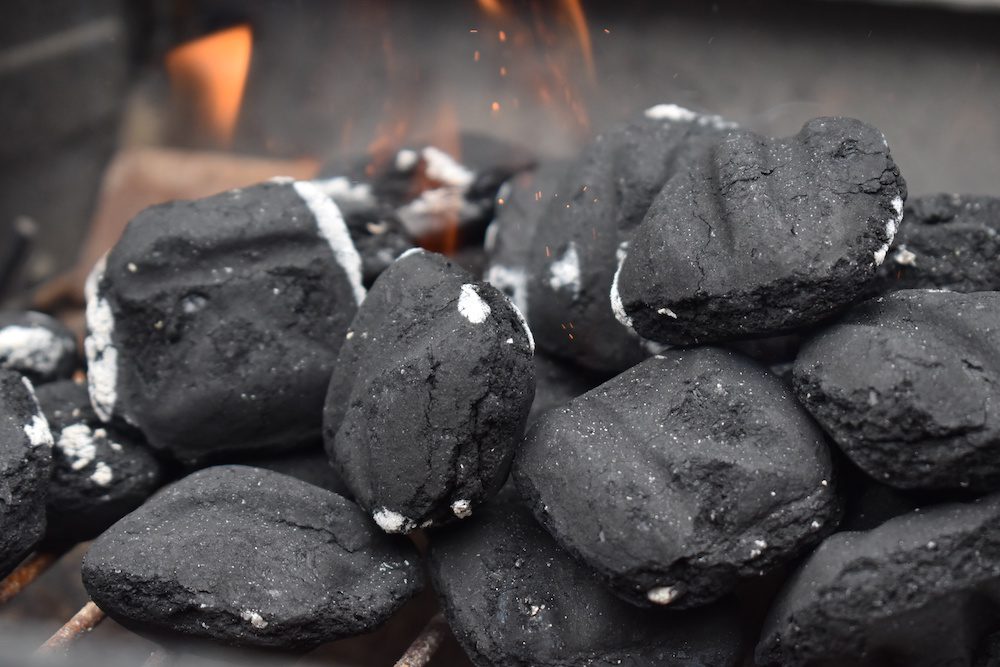
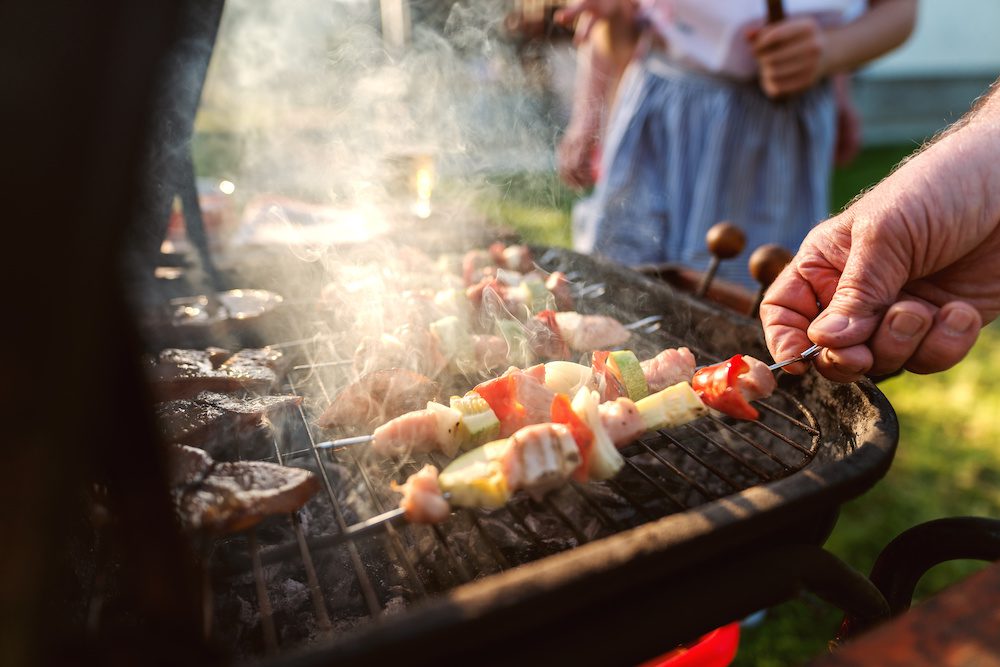
Gas grills are generally going to be more expensive up front than charcoal grills. It makes sense, because they’re a bit more complex in how they operate. Usually, you’ll have an array of burners, a gas line, and an electric igniter. Charcoal grills are more simplistic. They’re essentially a vessel that holds charcoal briquettes, a grate, and a lid. This simplicity affects the purchase price.
Taking the complexity of the grill assembly into account, charcoal grills are generally more straightforward to set up (30 min), as opposed to a gas grill (1+ hours). Gas grills may also require a few more tools to mount the burner assembly and gas line.
Operationally, both briquettes and gas are going to cost money to replenish over time. If you’re not tapping into your home’s propane or natural gas line, you’ll first need a propane tank. A 20lb tank will range anywhere from $50-$100 EMPTY, based on the brand. Look for an Ace Hardware gas can to save! From there, it’ll be around $20 per propane refill each time it runs out. With briquettes, you’re looking in the range of $10 for an 8lb Bag, which you’ll get a couple grilling sessions out of. Overall, it’s a matter of your budget and preference is to keep the flame lit.
The time it takes to ignite and allow the grill to get up to temperature may be a deciding factor in your search for gas vs charcoal grills. Especially if you plan to grill on weeknights when life is hectic, it can be nice to have the instantaneous ignition that comes with a gas grill. Simply push the igniter, flick on a burner, and viola – you’re lit. With charcoal, the lighting takes a little more planning. Once you ignite the briquettes (whether using lighter fluid or a chimney tool), expect to wait about 30 minutes for them to get red hot and ready for action.

It’s all up to you and your guests’ taste buds. If you are looking for a smokier taste, then charcoal grills are the way to go! There are even briquettes on the market that enhance the flavor of your food. Any gas grill will produce equally mouth-watering dishes. And no – you won’t taste the propane or natural gas in your food.
After the food has hit the table, it’s important to clean and maintain your grill routinely. With charcoal grills, you’ll need to empty the ashes every 1-3 sessions, and scrape the grate with a wire brush after each use. Gas grills just need a scrape and brush after each session, but you’ll periodically need to check the gas line and burners to make sure they’re secure.
According to the National Fire Protection Agency, more than 19,700 grilling-related incidents occur per year in the United States. Structure fires, contact burns, and flare-ups are a real risk, but are drastically mitigated by taking the proper precautions. No matter the type of grill, make sure it has secure footing and is distanced from your home or overhanging obstructions.
If using a charcoal grill, avoid adding more lighter fluid after it has already been lit. Buying charcoal that has already been soaked in starter fuel can reduce the risk of injuries with charcoal grills. With gas grills, be mindful of leaving the gas on too long before pressing the ignition button to avoid flare ups. Make sure there are no leaks coming from the gas container or hoses before you start the grill.
For more on grill safety, ask the experts at Louie’s Ace for assistance.
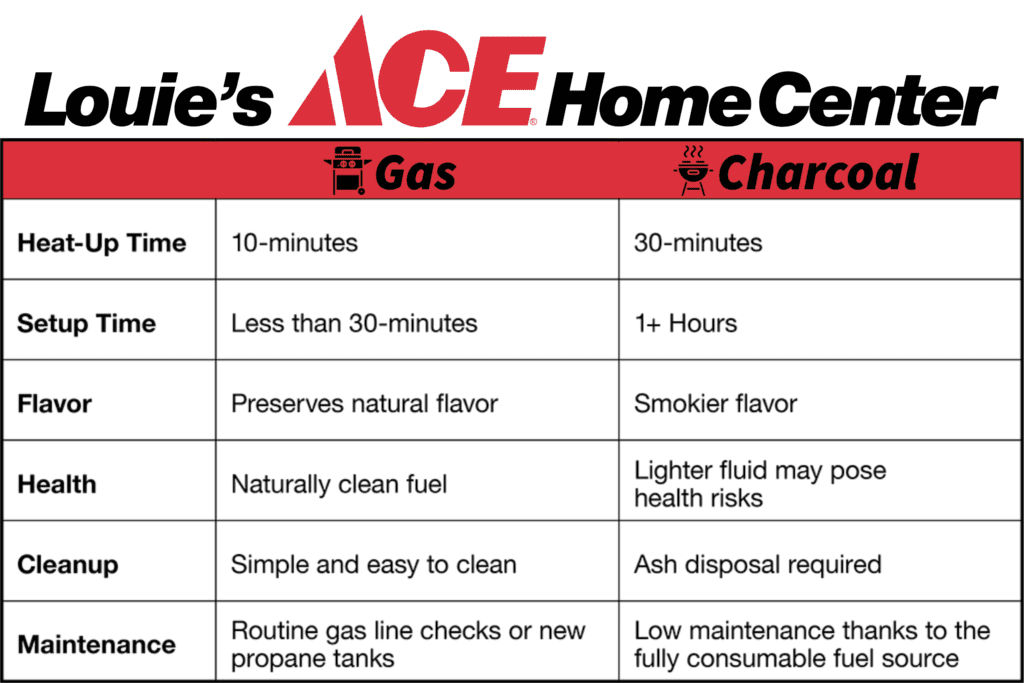
Charcoal grills are a classic, and there’s no substitute for the smell of briquettes and billowing smoke to tell your guests that it’s BBQ time. Not to mention, there’s something about operating a natural flame to flex some muscle and show everyone you’re the grill boss! On the other hand, there’s no comparing the convenience that comes with one-button ignition on a gas grill. You’ll be able to fling burgers all evening without missing a beat.
If it still seems like a tough call, contact Louie’s Ace Hardware Store or come in and ask one of our friendly staff members for advice. Additionally, browse this month’s ads to save on other items while you’re there! We are your friendly Dayton & Fallon hardware store, and are here to serve your grilling needs!
Long a tradition for some families, canning has seen resurgence in popularity alongside the growing admiration for mason jars. Food that has been canned can last for years, extending the life of your food and preventing waste, and now even more so than ever there are great ways to add personal touches to your canned food making them great gifts for friends and family.
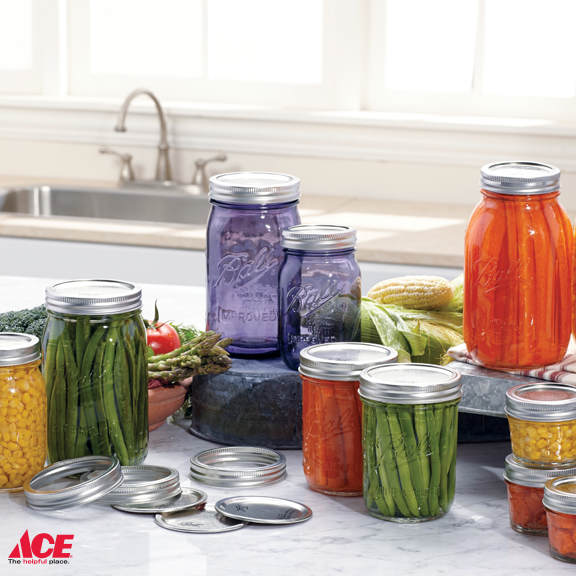 Methods of Canning
Methods of CanningThere are two methods of canning, each corresponding to the type of food you are looking to can. It is important that you choose the correct method for what you want to can. This can be crucial in ensuring your food isn’t susceptible to bacteria.
Water Bath Canning: This method is used for foods and vegetables with acidic content. This is what you use for jams and jellies as well as for pickles. The process of water bath canning is fairly easy, and is a great starting point for beginner canners.
Pressure Canning: Using the pressure canning method is for foods with low acidic content including vegetables, meats and poultry, and seafood. This particular method requires a lot of attention because if the process is done incorrectly, this food can spoil very easily.
While there are two different methods depending on what you’re planning to can, there are things to keep in mind with both methods that are important to making sure your food is properly canned, thus making sure your food is optimally protected.
For both methods, be sure to select your favorite recipe and follow those instructions carefully. It is important to reduce the entry points for bacteria before the food is placed within the jars. When done correctly, food is edible for one to five years depending on what you’ve canned.
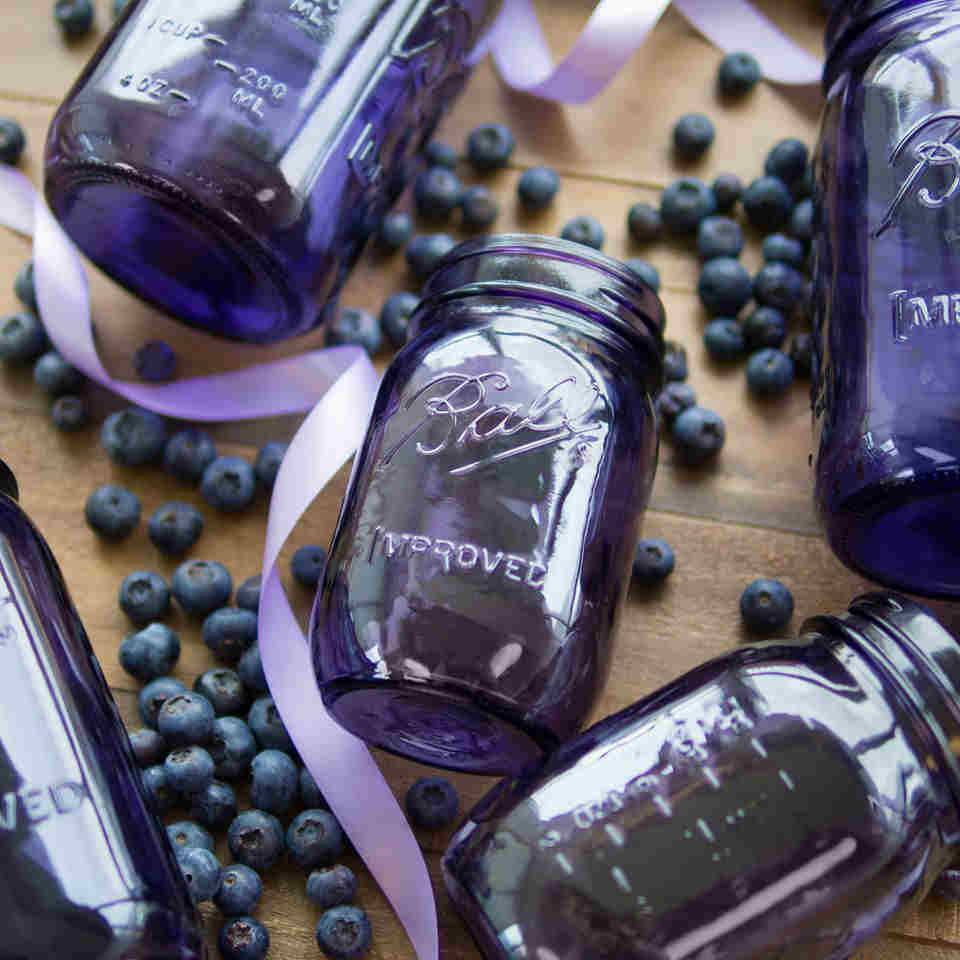
With the Mason jar trend at a peak, there are more options than ever to add a personal touch to your canned foods. Lots of DIY elements including chalkboard paint on the lids or die-cut labels are great ways to add a personal touch, especially when gifting things such as jams to friends and family.
One thing we have here at Louie’s ACE that we love are the purple heritage jars; they resemble desert glass and are special edition, which means as soon as they sell out, they’re gone!
Visit Louie’s ACE today to see all of our food canning supplies!
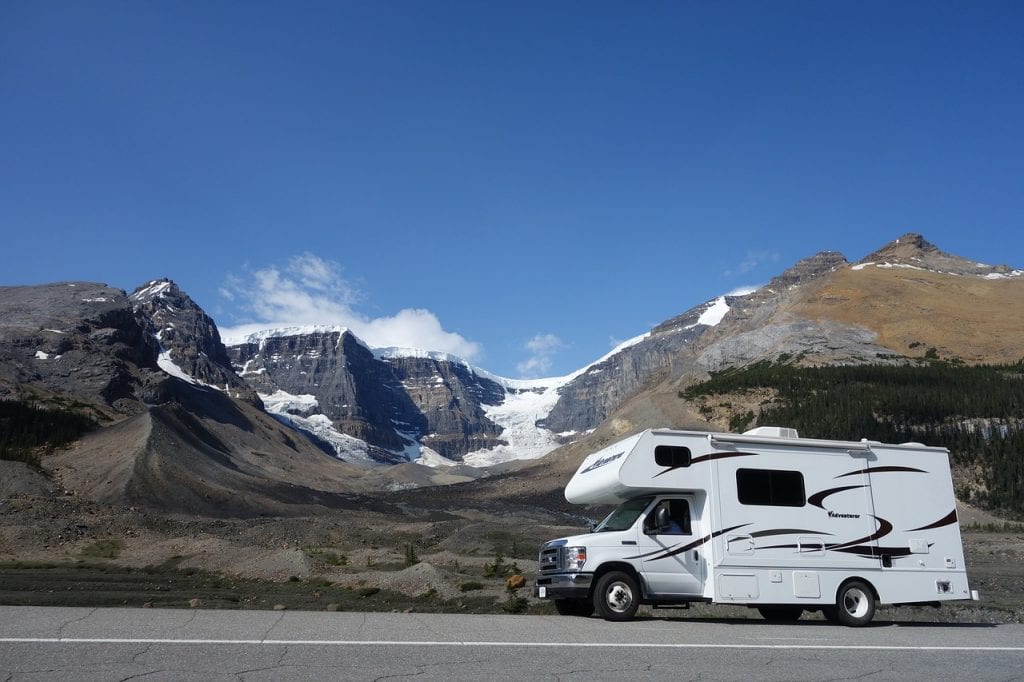 Are you ready to start planning for your spring and summer camping trips? A few months ago we showed you how to winterize your RV to get ready for the colder months. Now, we'd like to share our best tips for de-winterizing your RV, so that you can be on the way for your next adventure.
Are you ready to start planning for your spring and summer camping trips? A few months ago we showed you how to winterize your RV to get ready for the colder months. Now, we'd like to share our best tips for de-winterizing your RV, so that you can be on the way for your next adventure.
Before you go out for a trip, make sure you check your RV for gaps, cracks, and tears. You’ll want to fix these before the season starts to ensure a safe and enjoyable experience.
Canning has been a long tradition for families and has seen a resurgence in popularity alongside the growing admiration for mason jars. Food that has been canned can last for years, extending the life of your food and preventing waste, and now even more so than ever, there are great ways to add personal touches to your canned food making them great gifts for friends and family.
 Methods of Canning
Methods of CanningThere are two methods of canning, each corresponding to the type of food you are looking to can. It is important that you choose the correct method for what you want to can. This can be crucial in ensuring your food isn’t susceptible to bacteria.
Water Bath Canning: This method is used for foods and vegetables with acidic content. This is what you use for jams and jellies as well as for pickles. The process of water bath canning is fairly easy, and is a great starting point for beginner canners.
Pressure Canning: Using the pressure canning method is for foods with low acidic content including vegetables, meats and poultry, and seafood. This particular method requires a lot of attention because if the process is done incorrectly, this food can spoil very easily.
While there are two different methods depending on what you’re planning to can, there are things to keep in mind with both methods that are important to making sure your food is properly canned, thus making sure your food is optimally protected.
For both methods, be sure to select your favorite recipe and follow those instructions carefully. It is important to reduce the entry points for bacteria before the food is placed within the jars. When done correctly, food is edible for one to five years depending on what you’ve canned.

With the Mason jar trend at a peak, there are more options than ever to add a personal touch to your canned foods. Lots of DIY elements including chalkboard paint on the lids or die-cut labels are great ways to add a personal touch, especially when gifting things such as jams to friends and family.
One thing we have here at our ACE Hardware store is that we love the purple heritage jars; they resemble desert glass and are special edition, which means as soon as they sell out, they’re gone. Visit Louie’s ACE today to see all of our food canning supplies!